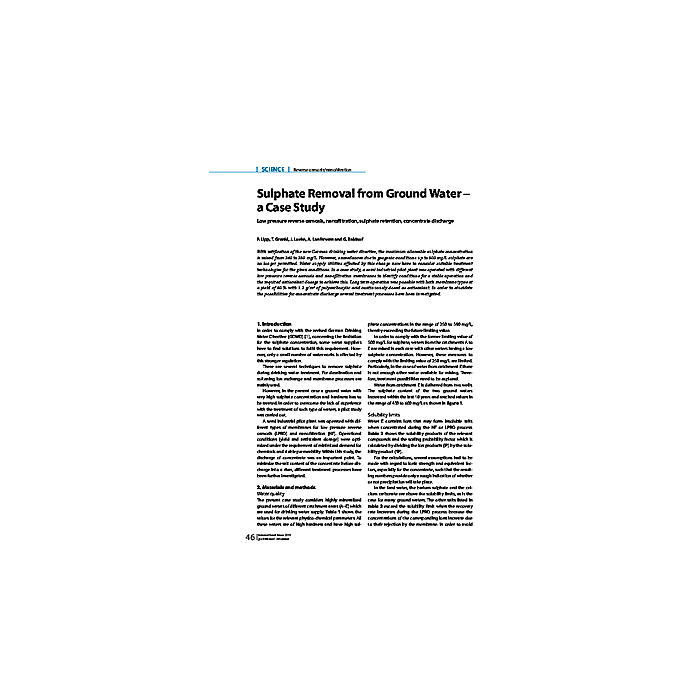Sulphate Removal from Ground Water - a Case Study
4,90 €
Auf Lager
Artikelnummer
05399_2011_SP1_01
With ratification of the new German drinking water directive, the maximum allowable sulphate concentration is raised from 240 to 250 mg/L. However, exceedances due to geogenic conditions up to 500 mg/L sulphate are no longer permitted. Water supply utilities affected by this change now have to consider suitable treatment technologies for the given conditions. In a case study, a semi industrial pilot plant was operated with different low pressure reverse osmosis and nanofiltration membranes to identify conditions for a stable operation and the required antiscalant dosage to achieve this. Long term operation was possible with both membrane types at a yield of 80 % with 1.2 g/m³ of polycarboxylic acid continuously dosed as antiscalant. In order to elucidate the possibilities for concentrate discharge several treatment processes have been investigated.
| Autoren | P. Lipp/T. Gronki, J. Lueke, A. Lanfervoss and G. Baldauf |
|---|---|
| Erscheinungsdatum | 30.06.2011 |
| Format | |
| Zeitschrift | gwf - Wasser|Abwasser - Special 1 2011 |
| Verlag | DIV Deutscher Industrieverlag GmbH |
| Sprache | English |
| Seitenzahl | 6 |
| Titel | Sulphate Removal from Ground Water - a Case Study |
| Beschreibung | With ratification of the new German drinking water directive, the maximum allowable sulphate concentration is raised from 240 to 250 mg/L. However, exceedances due to geogenic conditions up to 500 mg/L sulphate are no longer permitted. Water supply utilities affected by this change now have to consider suitable treatment technologies for the given conditions. In a case study, a semi industrial pilot plant was operated with different low pressure reverse osmosis and nanofiltration membranes to identify conditions for a stable operation and the required antiscalant dosage to achieve this. Long term operation was possible with both membrane types at a yield of 80 % with 1.2 g/m³ of polycarboxylic acid continuously dosed as antiscalant. In order to elucidate the possibilities for concentrate discharge several treatment processes have been investigated. |
Eigene Bewertung schreiben


